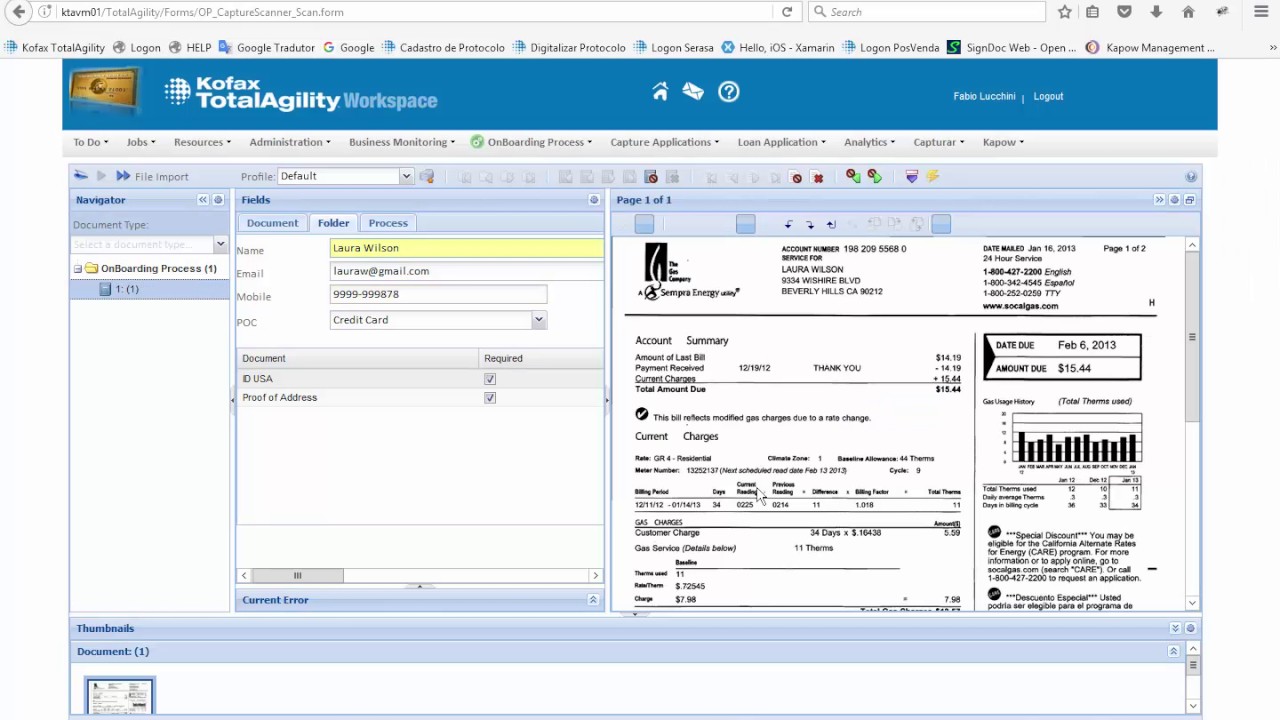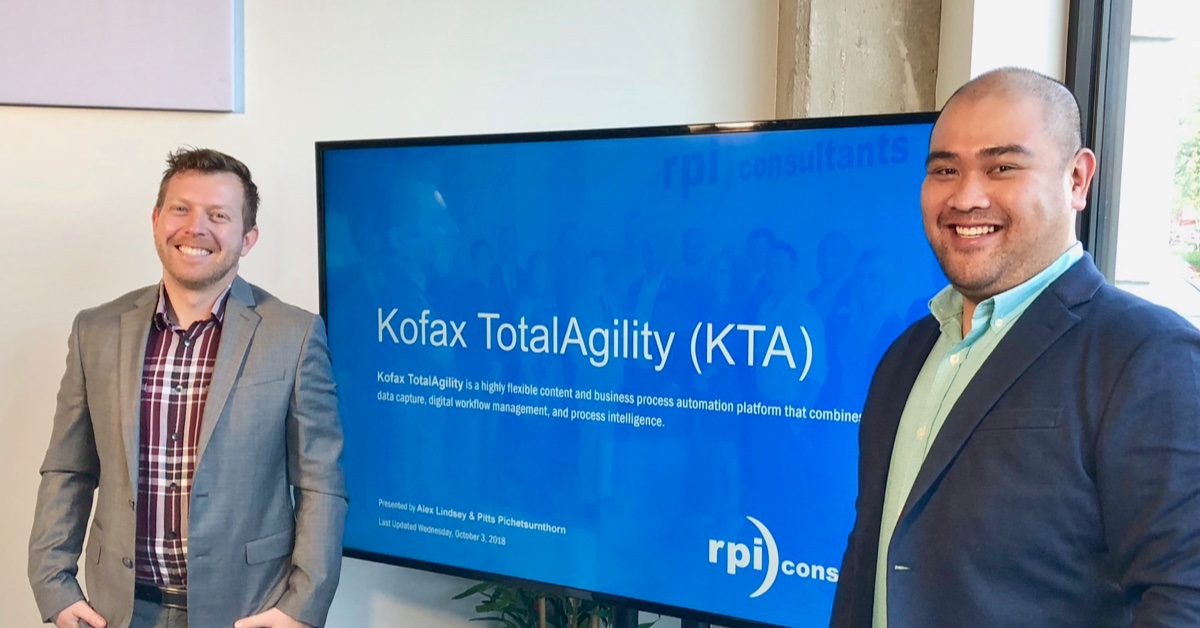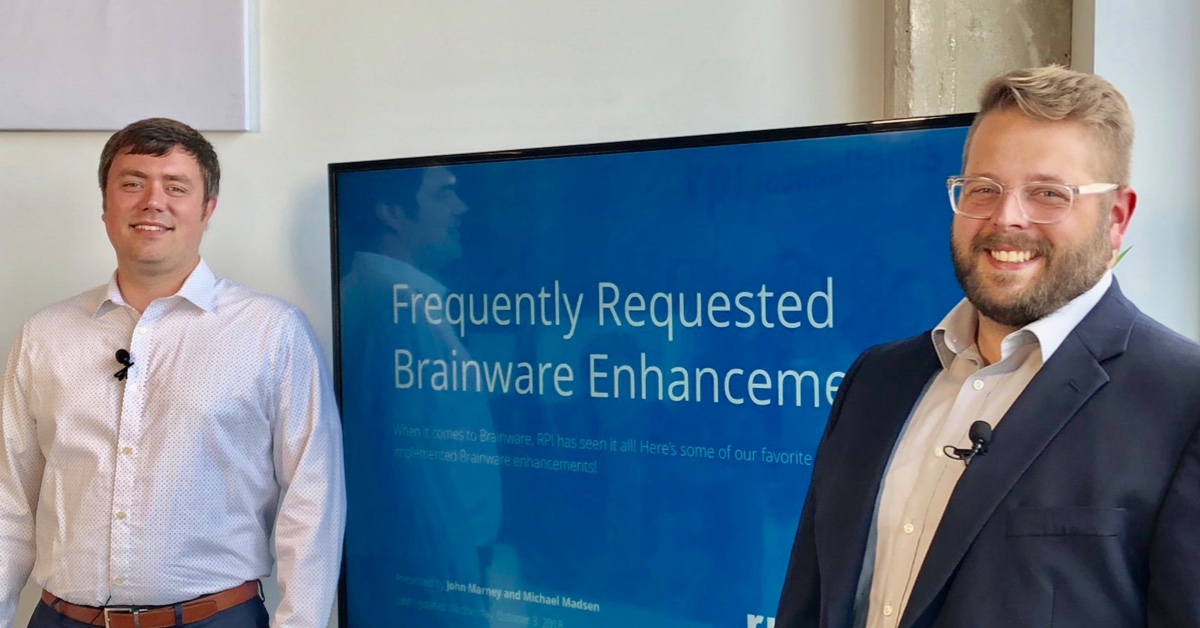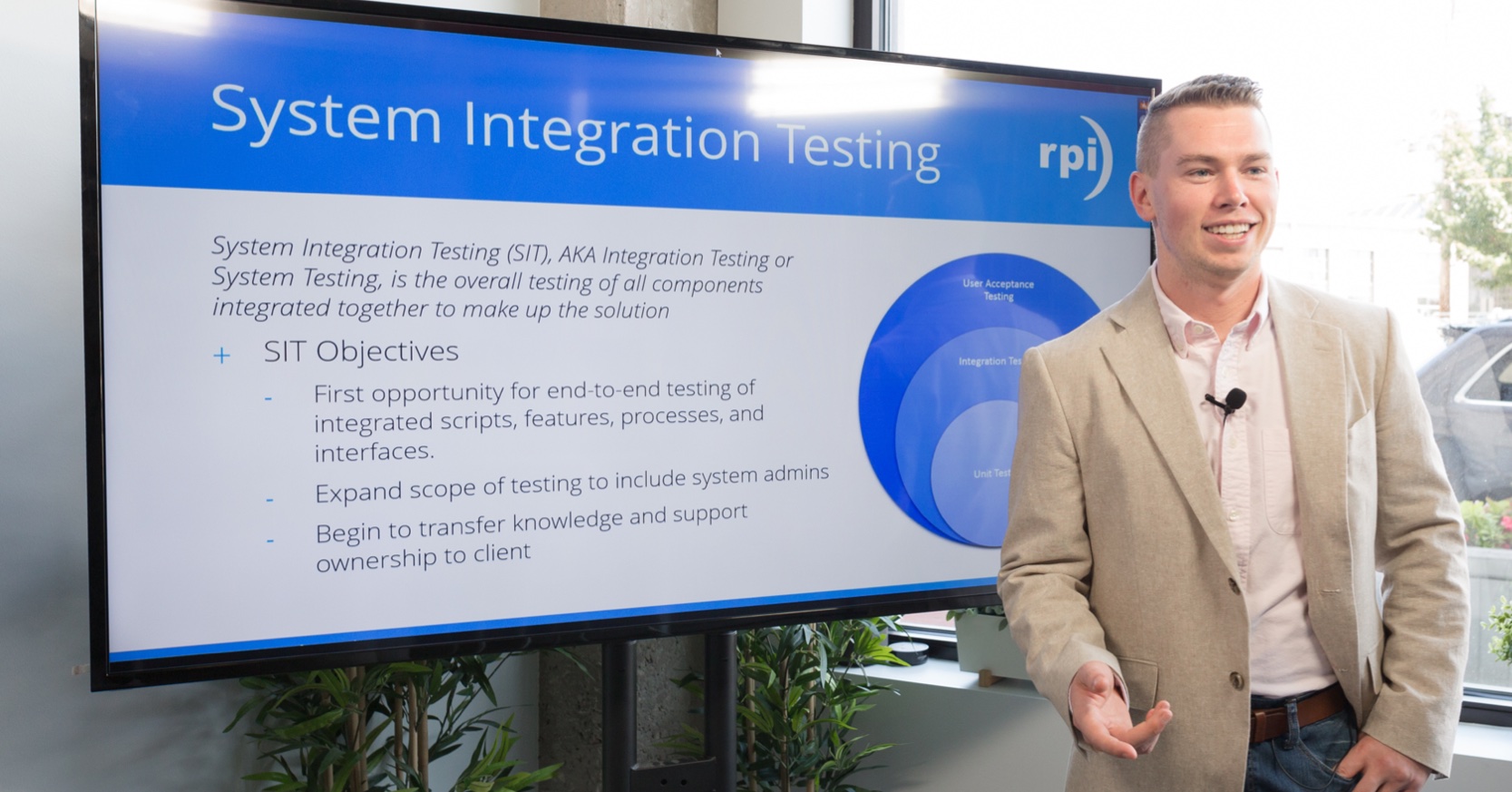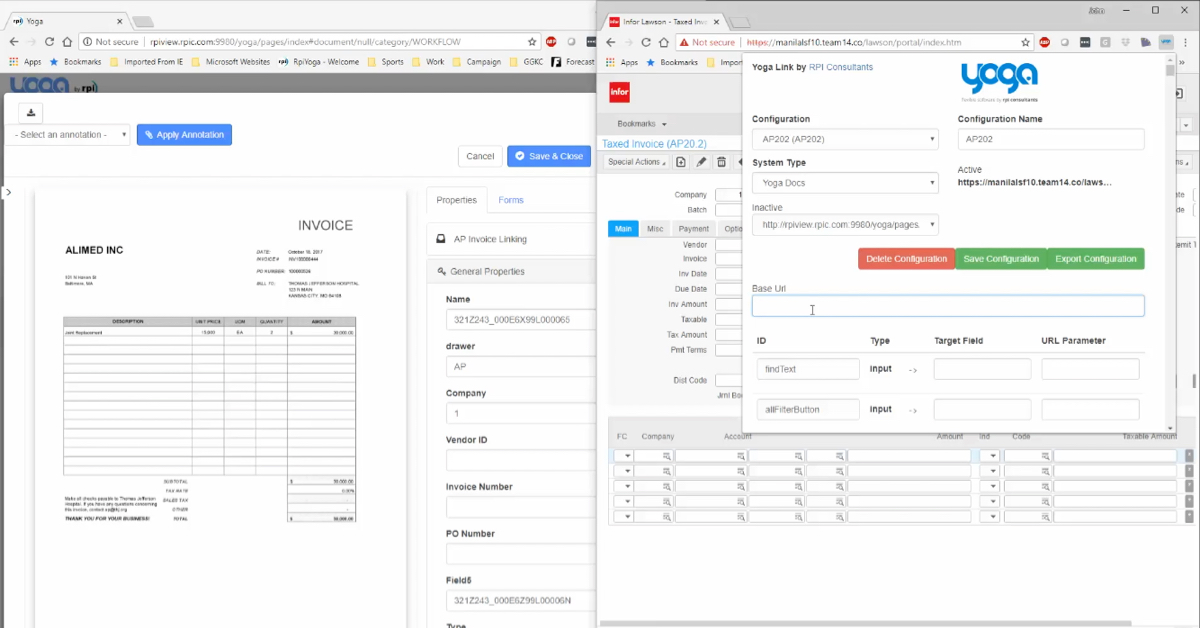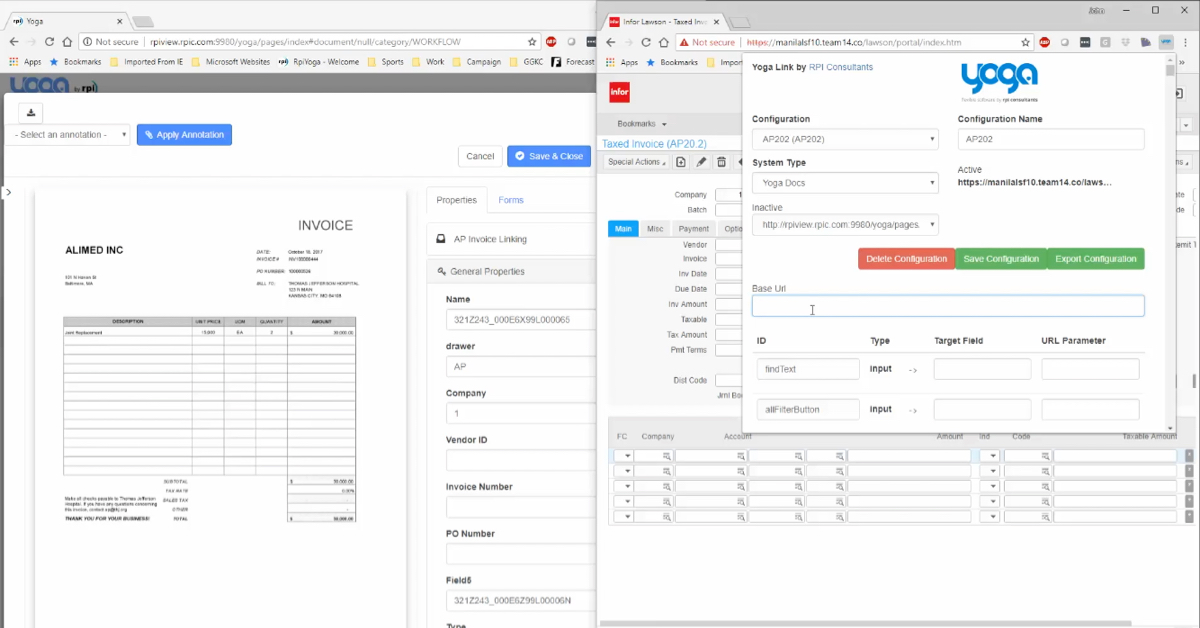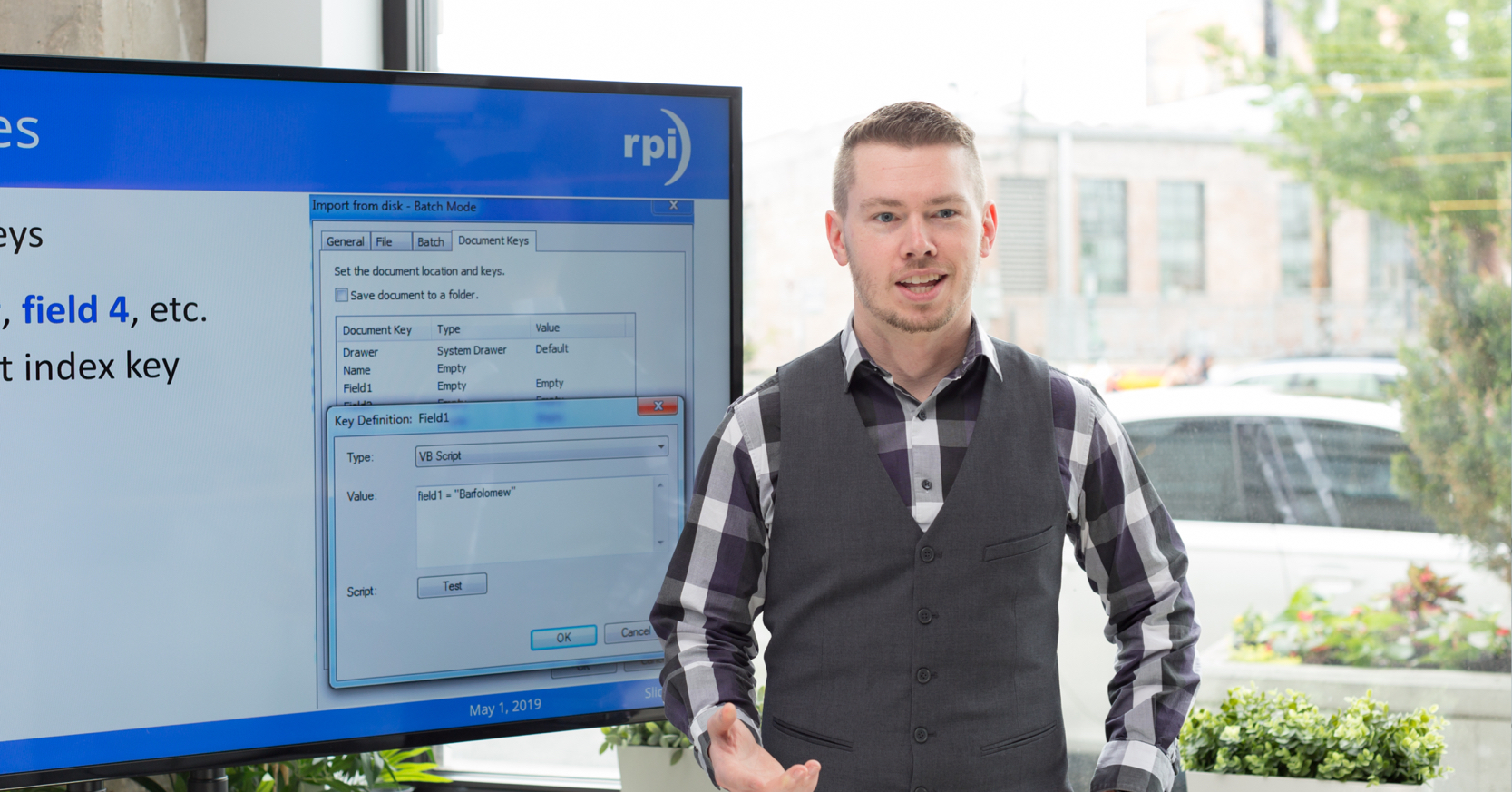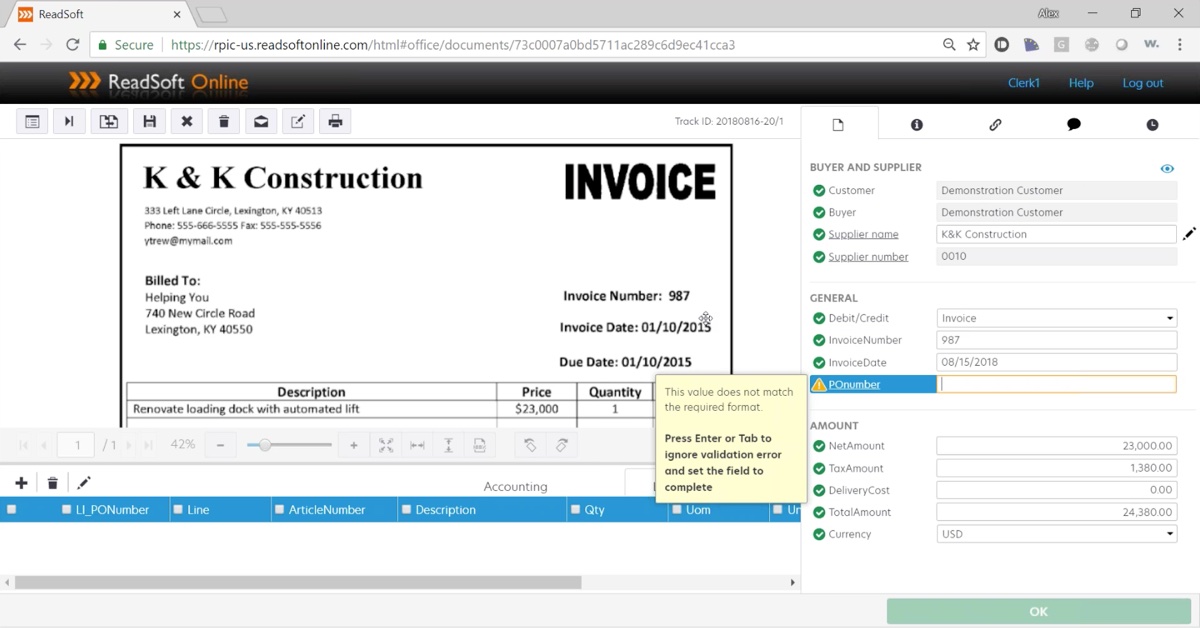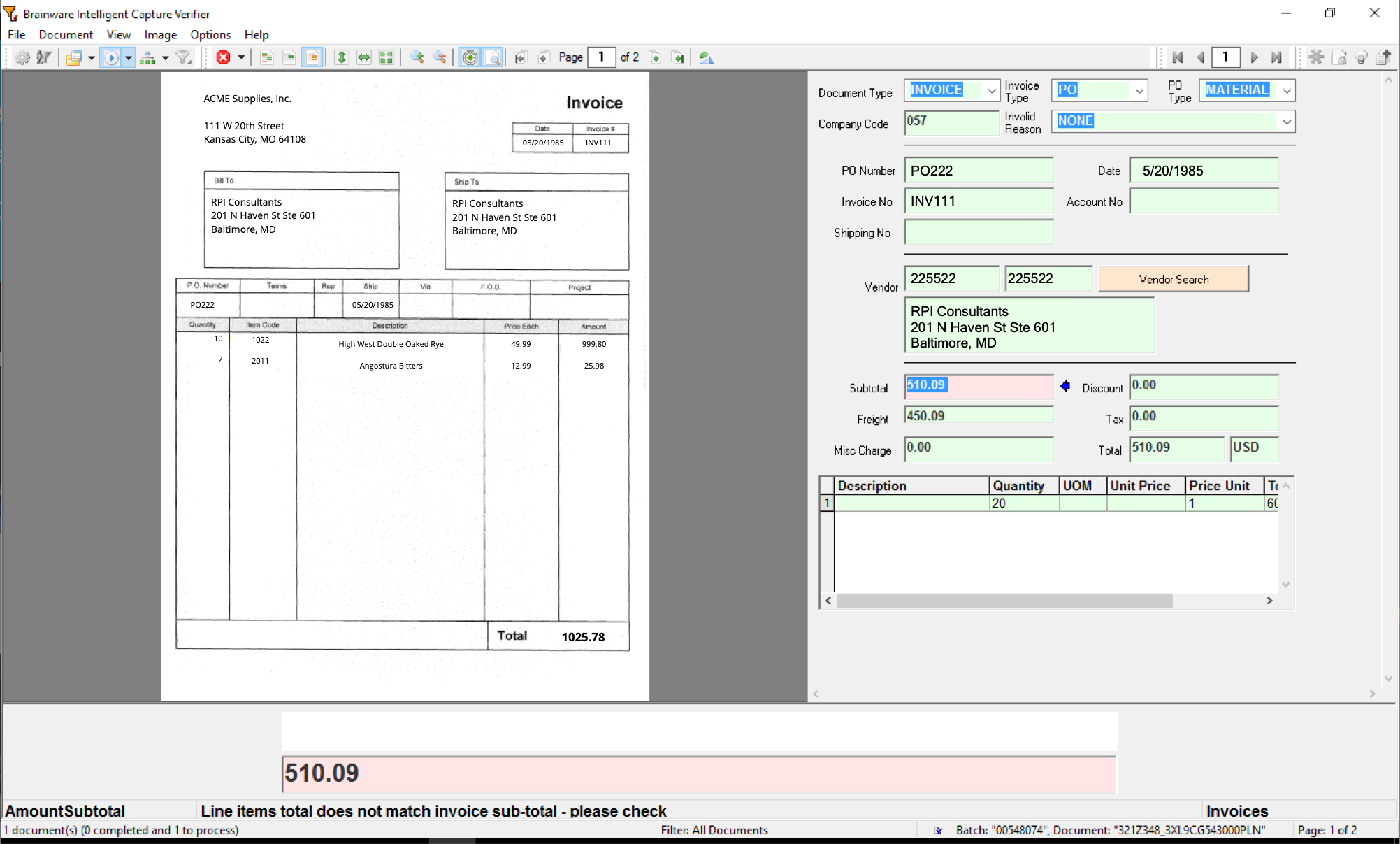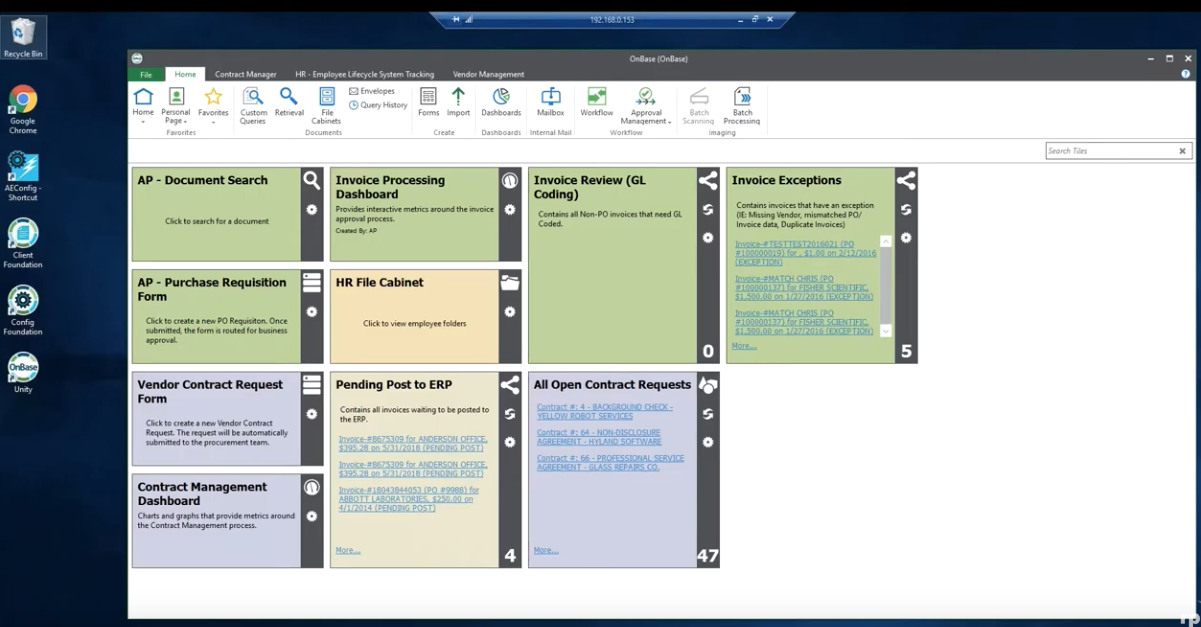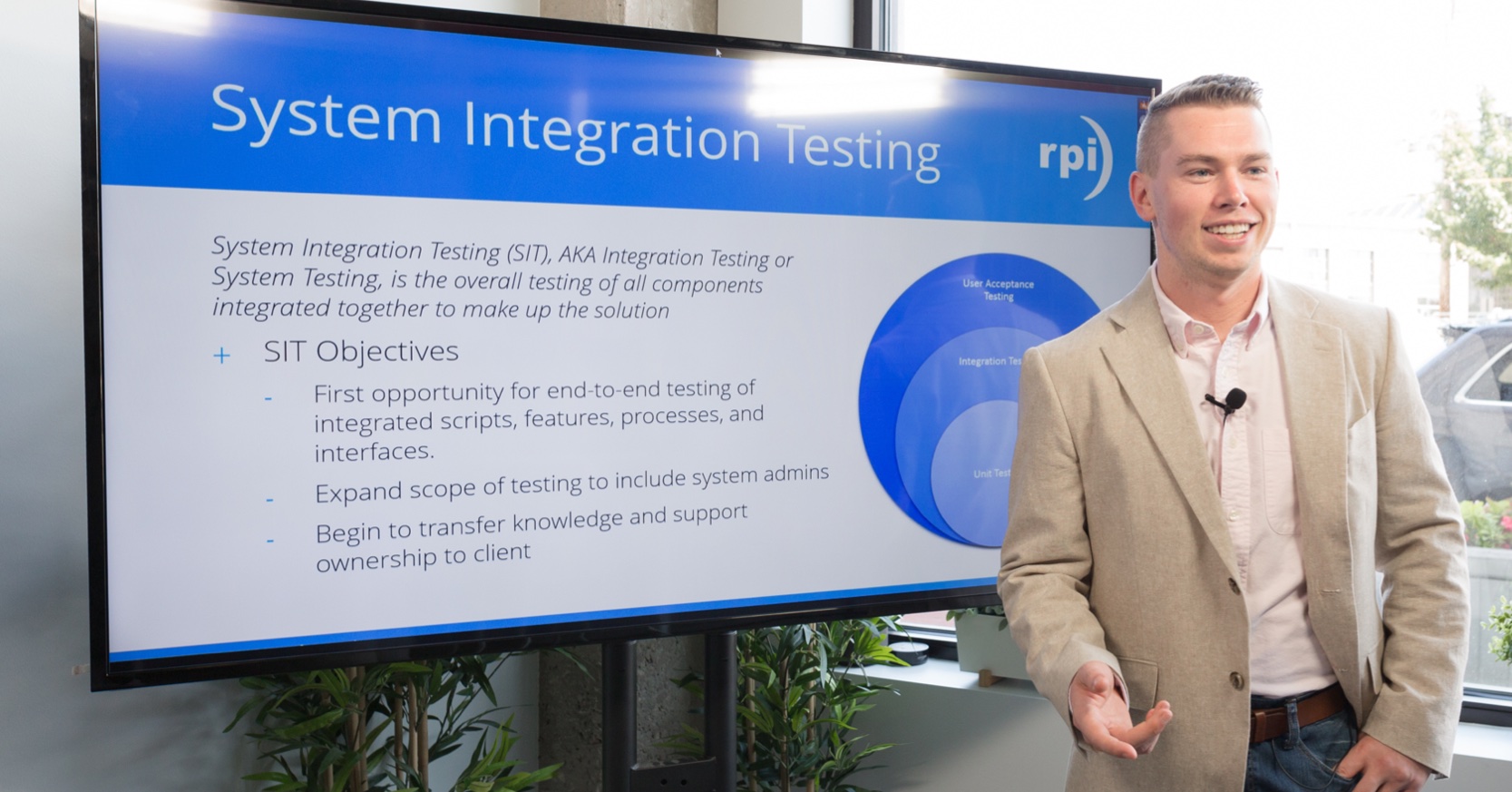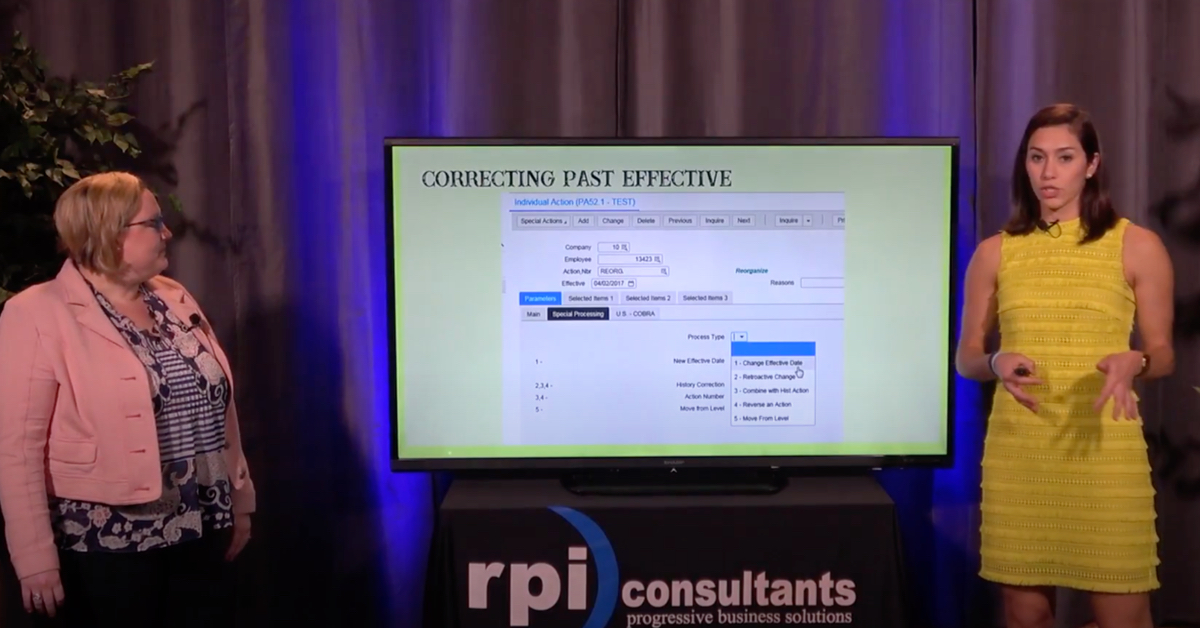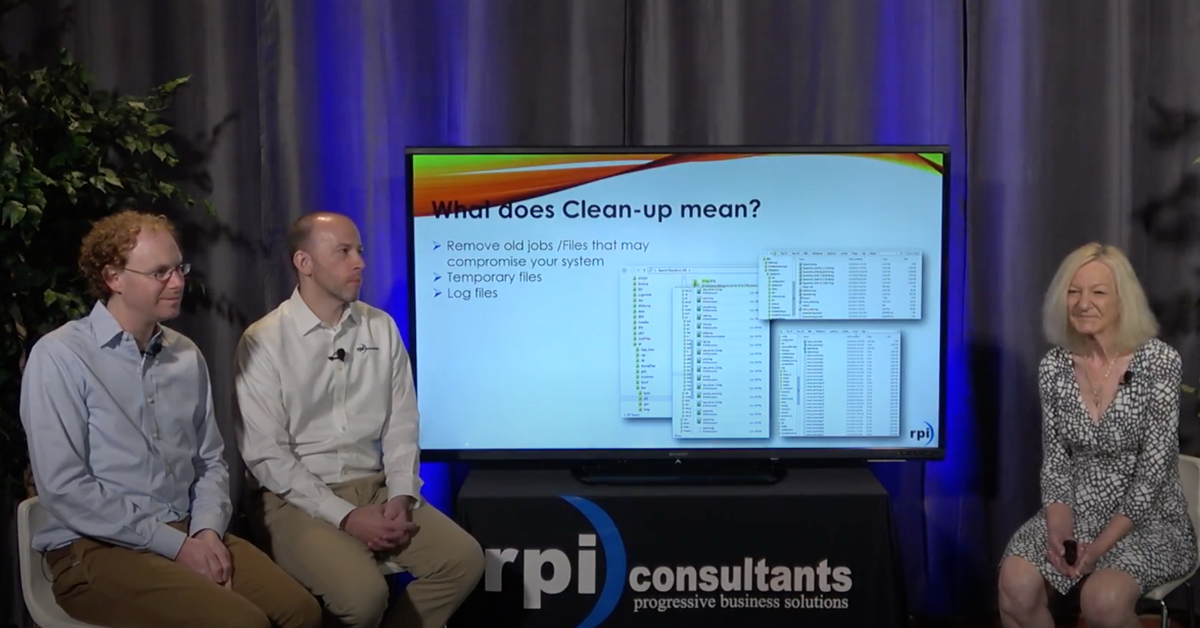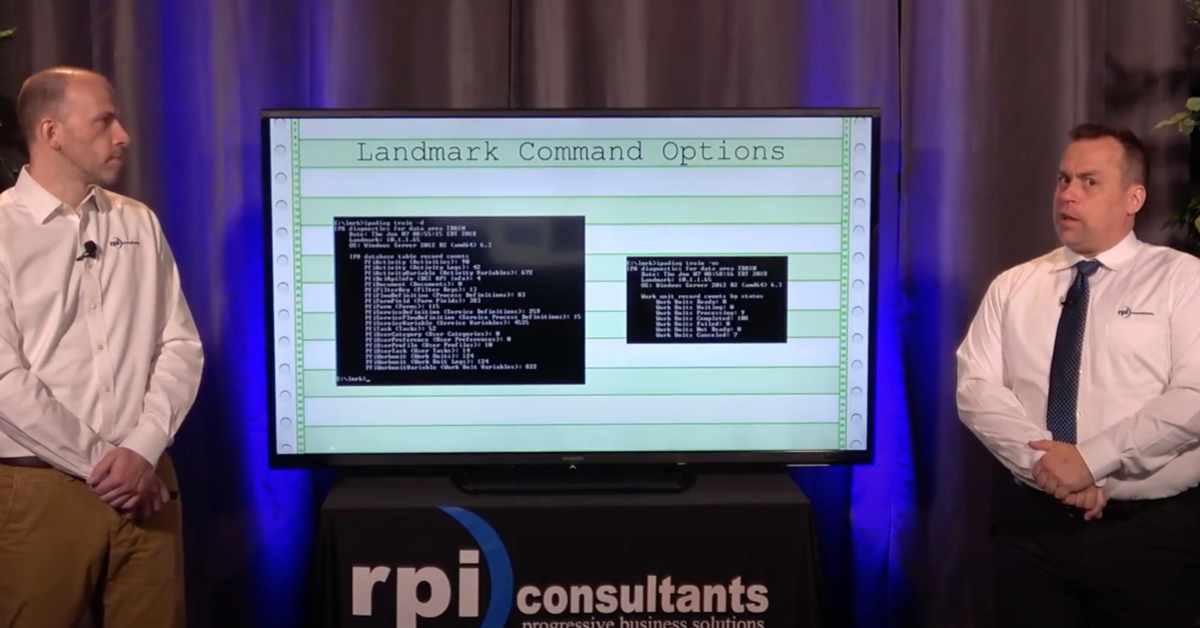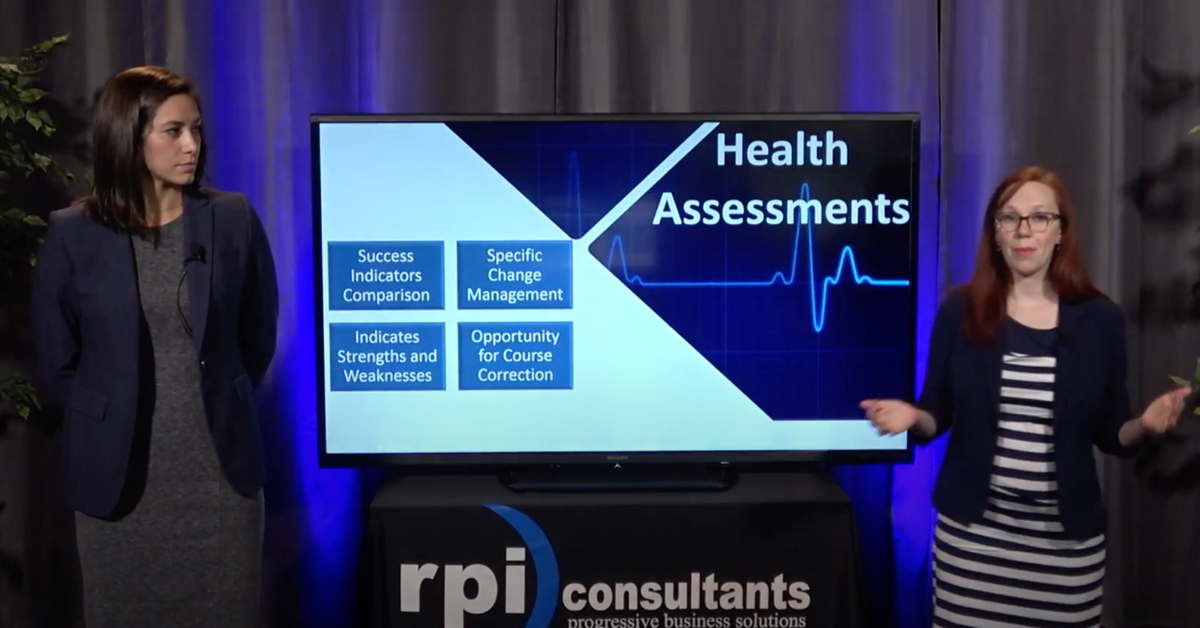LBP with d/EPM
Join RPI for a webinar discussing LBP with d/EPM. A webinar covering everything today’s LBP users should know about d/EPM in planning for Infor‘s new budgeting solution. Presented by Jim Kears and Beau Hunt.
Transcript
Justin: Hi, good afternoon everyone. Thanks for joining. I’m Justin Braun with RPI consultants. I run our service delivery organization. Thank you for joining our webinar today. We’re very excited to have you.
A couple of housekeeping items before I introduce our topic. This session will be recorded and available on the RPI Youtube channel within a couple of weeks, perhaps less. If you’d like to follow us on social media, you can like us on Facebook, join us on Digital Concourse, or subscribe to our Twitter feed. Please hold you questions until the end of the webinar today. We’ve got a lot of material to pack into a short amount of time.
This is fill you LBP cup with d/EPM cider. Fall is a season for change and this is a very exciting topic because there’s a lot changing with regard to how Infor Lawson does budgeting and reporting. We have two experts with deep experience in the realm of budgeting with Jim Kearns, our LBP expert and BI Reporting, Bo Hunt.
Jim’s going to talk you through some of the functional considerations and feature functionality as it relates to your budget stake-holders and Bo’s going to help you understand that underlying BI technology that supports d/EMP. One of the great soundbites I like about this solution, before I turn it over, d/EPM is a purpose-built budgeting solution built on the BI platform. We’ve got great representation from both sides of the house and I’m going to turn it over to them. Enjoy.
Jim: Thanks so much Justin. First off, we’ll go over the agenda today, so you’ll know what you’re going to get an opportunity to see. We’re going to start out with system architecture, which basically will tell you a little bit about the BI platform, and the footprint, and how d/EPM fits into that. Then we’ll be going over the features and functionality of both LBP, for those of you who may not have seen it, as well as to remind those of you that are using it for plan reviews, administrative reviews, and we’ll talk about reporting.
There have been some changes in terms of what things are called, from going from LBP to d/EPM, so we’ll go over those a little bit. Then finally, we get into probably what’s the most important part. If you decide to let RPI be your path to going from LBP to d/EPM, what might it look like? What’s a project lifecycle look like? What are the integration points that you might need to look at? That’s a little bit of what we’ll be going through today.
Bo: Excellent. Thanks Jim.
Jim: Mm-hmm (affirmative).
Bo: All right. We’re going to start off talking a little bit about the platform that d/EPM is built on. As Justin mentioned, it is built on the Infor BI platform.
While d/EPM is a new solution for our Lawson users, especially those coming off of LBP, it’s important to understand that it is an established solution. It’s currently being used by many of Lawson’s customers and more importantly the Infor BI solution, is very established. We’ll talk a little bit about that so we can understand how d/EPM really is just a delivered solution within that platform.
What is Infor BI? Really, currently it’s been rolled out to over 3,000 Infor customers. It crossed all the different markets that Infor serves. Really, it’s a total end-to-end solution. It’s really positioned to replace quite a few products that are currently in Infor’s offering. If we look at some of the things that maybe you’re using today for reporting and analytics like LBI, Infor BI is positioned to be that replacement as we move down the road.
It provides true analytics, which really, there’s not a solution for that, a great solution anyway, within Infor’s offering. Also, it’s a great tool for performance management or planning tools like d/EPM. The reason for that is if we look at the Infor BI solution, it’s all based on an Infor OLAP server.
OLAP technology, it’s been around for a while. It’s nothing new but Infor’s solution is a little unique in that it allows for you to have write-back. If you look at some of the other solutions that are out there, you don’t have that ability to write-back to cubes at the cell level. With Infor BI we can do that. It also allows you to serve up that information at high speeds because it is an N memory grid database.
You can access you data anywhere you need to. If you’re at your desk, you can pull it up in your web browser. You can also bring up an Excel Add-in if you’re a power user and actually browse the cube data live or you can even bring up, there’s apps available for both Android and iOS, that allow you to view that on the fly. You can share reports, do annotations and it’s a really powerful feature.
Jim: Wow.
Bo: Security is pretty highly-sophisticated. You can both secure your reports and your dashboards at the high level, but you can go down to that cell level and really limit either what someone has the visibility to view, or edit. When we look at this, we’ll talk a little bit more about Application Studio in a little bit. Really, when we think about dashboards, they’re really just a collection of widgets or small reports that are all pulled together to tell a story for our customers and help them solve problems.
As we look at how data flows in, we’re going to talk about Infor BI first and then we’ll paint in here how d/EPM fits into this. If we look at the Lawson solution, their approved path is coming from your Lawson application database. They typically recommend that you go though the Infor Ion for their integration, but it’s not the only way to go. Currently, there’s some licensing issues. Infor’s working on cleaning that up and providing Ion for all BI customers.
You also have the ability to take your data out of Lawson or other solutions and bring it over into staging tables and do your ETL there. Then, bring that into your Infor BI cubes so that they can be served up through Application Studio, reports, and widgets.
The nice thing about Application Studio, it’s very powerful. You can think of it as your replacement for Crystal reporting, so it’s going to allow you to do everything from detail-level reporting to pulling up your summary reporting in your analytics cubes. You can also pull from the cubes but you can also pull back from your source system. If there’s some data that you don’t have, in maybe your data store, and you need to go back to your S3 database, you can do that with Application Studio, all within the same report.
From there, from Application Studio, we actually serve those reports out through BI dashboards, which is a web application that’s available again, either through your browser or through a mobile application. Then, we already talked about Office Plus, which is a Microsoft Excel Add-in. That’s the Infor BI footprint, if you will. When we look at, “Where does d/EPM fit within that?” Really, it’s right here. It’s a delivered solution that sits within this. You have pre-built cubes and pre-built reports that are designed and delivered in that architecture.
It looks like we’re … Hey, Carlos. Our slide is not advancing.
Male: It’s a little delayed. It’s a little slow.
Bo: Okay. There we go. Okay. We’re skipped ahead a little bit. Let me catch it up here.
As we look at the environment that you want to install Infor BI in and eventually d/EPM, we typically will recommend that this is installed on a three-server environment. The reason for this, is actually, there’s quite a bit of processing that takes place within the environment. Basically, we have to keep all of those analytical calculations in memory. That’s the whole point of it. We’re serving this up quickly. We’re doing this dynamically. As users make changes on the screen, we want it to refresh quickly.
What we’ll typically have is a database server that’s going to be running Microsoft SQL. We’re really just using that for repository information. Your security’s going to be in there. We’re also going to have other meta data regarding your OLAP cubes. The OLAP server, this is where all the magic happens really. This has got to be a pretty beefy server. Again, usually we’re going to recommend about 32 gig of memory of memory at minimum because we want to keep all your data in memory and ready to serve up on moment’s notice.
Then, on the front end really, we’ve got our web server, which is going to be running IIS and serving up the Application Studio reports and serving those through Infor BI dashboards. We’ll look at what that looks like. We can help you by looking at, when it comes down to an implementation, we can help you with server selection and what not, but from an OS standpoint, Infor BI’s currently compatible with Window’s Server 2012, 2008R2.
You’re going to need to have SQL Server on that database server, IIS on the web server. Currently, we support Internet Explorer 10 and 11. We don’t support Edge, Chrome, and Firefox. Then, from the mobile standpoint, you typically don’t want to bring it up in your browser. There’s a delivered application that’s available in the app store for both iOS and Android.
We’ll talk a little bit more about configuration here in a little bit and what your options are, but the main tools around this are Import Master. That’s going to allow you to schedule your loads. A great example of this, is if you wanted to have d/EPM updated with your actuals every month and let’s say we close by the 12th. We could set it up in Import Master to do all of your ETL of data and transform and pull that into your cubes on the 12th, which is a big improvement with LBP because right now, that’s a manual process.
BI Designer, that’s where all of our design of both the cubes, the dimensions within the cubes is done. Application Studio, we talked about already, is where your reports are served up and developed. The nice thing about this is you can customize these reports in Application Studio as well. As well as build custom new reports. BI dashboards we talked about, is where we’re going to serve those up and then Office Plus is a great tool for your power users. You can basically go in, anything you need to do a custom report on, you can pull those out.
We’re going to let Jim talk a little bit about the applications and models within d/EPM. He’s mostly going to be focusing on budgeting and planning. Workforce budgeting, we do want to make you aware of though. It’s going to be coming out in version 11.1, which right now is slated to be at the end of September 2016, right around the corner. Also have features around financial consolidation, strategy management, and capital management. Let’s let you talk a little bit about that Jim.
Jim: Wow, there’s a lot to this product. You can tell just looking at this. I would suspect that most of our audience is really not so technical that they necessarily understood everything that they were seeing there. Now, that we’ve gazed under the hood, let’s look at maybe … We’ve looked at the technical aspects. Let’s take and look at some of the functional aspects of this and see what it’s going to look like.
Now, you can have any color you want, as long as it’s black.
Bo: That’s LBP though, right?
Jim: That’s correct, okay? Basically, this is were we’re coming from. Many of you have been using LBP. Some of you are looking to go to d/EPM. LBP was a pretty simple product and basically, I always would tell my clients, “It is what it is. This is what it does.”
What are the kind of things that we’d work with? Basically, you did income statement budgeting. No balance sheets, no cash flow, very limited in terms of what you could do, very tabular looking, almost like an Excel spreadsheet. If you happen to be a company that worked in multiple countries and you needed multi-currency, it handles that.
It uses roll-based security, so that, in effect, you have Administrator that sets up users who will be planners and that Administrator can control what those planners can see, also what they can edit, but what they have access to. If you have workforce information such as salaries and that sort of thing, the details can be hidden. It can be budgeted centrally, so you were pretty much able to control what people are able to see.
It also has the ability to do forecasts, in terms of what a forecast is, that’s where you’re basically taking your base budget. You would bring in some actuals for what’s happened to date, and then you might be editing the future periods in order to decide, what does our idea really look like compared to what we thought it would look like back in January?
I jumped ahead here for a second. Workforce budgeting, that has to do with calculating your employee costs. In most companies probably, at least 60-65% of the costs that are in a budget relate to the employee costs. That’s a pretty important aspect for most companies. What LBP did was to basically take positions, job codes and employees, put some rates against those, calculate what the salaries would be, then we could also come in and calculate the full costs of what the employee would be over time. It’s a pretty important aspect to most companies.
We do this in what is known as a data set. A data set is basically where you go in and you indicate an amount of time, in other words, I want a budget for 2017, or maybe 2017 and 18 if I want to go out two years, or possibly five years. We take that particular amount of time and we’d also take an entity, or a company, and we would decide, this is who we’d want to be budgeting for.
Within LBP, there was also something known as optional budget approval, meaning that you didn’t have to use it but if you wanted to have Supervisors come in and actually approve the budgets that people had done, it had that functionality as well, still does by the way because it’s a current product that some of you are hoping to move away from to go to d/EPM.
There’s also driver-based planning. We create something known as a custom model there. Basically, that’s a calculation. There’s four mathematical type functions that you can do within these custom models. You can basically do addition, subtraction, multiplication and division, so pretty simple models but you were able to then use drivers in order to do certain calculations. You might use units. “I’m going to sell a hundred units at ten dollars a piece and that will give me a thousand dollars as my budget result.”
Finally, there’s built-in financial analysis. It’s pretty simple within LBP, in that you’re able to put one set of budgets up next to another set of budgets and when you do this, you can do some variance calculation and that sort of thing. I think there are about nine bullet points in here that give us what LBP will do.
Bo: Are you ready to get a little bit more with d/EPM?
Jim: Yeah. I think people have probably heard enough. Oh, okay. Well, who’s this good-looking fellow? Well, if there are any ‘Game of Thrones’ fans out there, I’m sure you might recognize this guy. His name is Eddard Stark. What’s the significance of Eddard Stark? Well, actually d/EPM’s been around for a good while.
He was the hand of the King in Winterfell and there’s no truth to the rumor that if he had used d/EPM in order to manage those finances for the King, that he would have managed to keep his head. I’m just saying. Actually, there’s not a bit of truth to that rumor anyway but I’m sure some of you ‘Game of Thrones’ fans would find that o be an interesting story behind what might have happened.
If we look here, we have a rather busy chart over here on the left. In the second column where it says LBP, those are the same nine points that I talked to you about a few minutes ago. Look at the list in the third column here, which relates to all of the features, not all of the features, but many of the features that you would find to be important if you were going in and doing budgeting.
The nice part about this is that you can almost take this a la carte and you can decide which ones you want to use. There are certain ones that are really core to the product, then you need to set those up but you have a lot of options. We’ll go through them now. I’m not going to rehash the LBP items, but what I will do is to go through and actually talk about some of the other items that we have here.
For instance, on forecasts, LBP does it, d/EPM does it, but we also have a built-in template in there to be able to do a rolling forecast. Now, some of you might wonder, what is a rolling forecast? All it is, is as you go from month to month, you take the very first period out of your analysis and you add the next period in at the end, so that you can see what is it that I’m going to be doing over the next 12 months? It very often has actuals built in it as well.
You’ll also notice here that we have a data set and underneath that I have four elements because d/EPM will now be breaking the data set out into four elements. This is a tremendously powerful aspect of what this product will do. A planning cycle is where we basically will decide, what entity do I want to use and what time do I want to do in terms of budgeting?
That’s very close to the original data set but then we also have something called planning steps and that’s where we go in and we decide, which accounts do I want to look at? It helps us to slice and dice and isolate a particular area that we’d be working with.
Workbooks are where we do the actual work, they’re like the plan view within LBP, but you can have up to 25 tabs within a workbook in this product going forward and then you can do your detail entry. You can also actually attach a document, something that wasn’t done before and a number of other ad hoc tabs that you can utilize in there.
We also have something called work flow. We have a client that we’re working with right now and they prefer to do their capital budgeting first. They want to see what kind of assets they’re going to purchase and then based on that, they then try to go in and project what their operating costs will be as a result of those items, as well as the revenues. They would setup a work flow in such a way that no operational budgeting is done until the capital work is done.
Bo: The setup is a prerequisite, essentially?
Jim: It’s setup as a prerequisite, exactly. We also had the driver-based planning. I mentioned custom models a few minutes ago. Well, we’ll now use allocations and that’s where we basically split costs out based on certain assumptions. Allocations do exist in the module in Lawson but they were never in LBP, so this will be something that I think a lot of clients would use.
We also have dependent accounts, where we can put an amount into a particular account and then we can have other accounts that automatically populate based on a relationship back to those accounts, to that parent account and the dependent accounts will pick up that value.
We also see something here called sub plans and below that it lists sales planes, capital planning, decision packages and strategy management. Well, sub plans within d/EPM are actually a capability that it has in order to do much more detailed planning. In LBP, about all we had, was we could add detail lines. A lot of times companies are using spreadsheets outside of the system in order to calculate those sorts of things.
Bo: This is where some of the custom attributes come in and allow you to budget at that lower level.
Jim: Yes, the product uses custom attributes very, very heavily. You would use some of those in there. If you wanted to know what that thousand dollars was in the account, for instance, in a sales plan, you might decide that we’re going to sell ten units at a hundred and it details out not only the rate or the cost per unit, but also the number of units that it has.
We also have something called flexible business modeling in there. That has to do once again, with the flexibility that we have within the data set because we can decide that we only want to look at a little bit or we want to look at a great many things and we can decide what the focus of our budget needs to be. There’s a tremendous amount of flexibility that is there.
Beyond that, we have dashboard reports and templates. We’ll be talking a little bit more about those in a little bit. Dashboard reports are a tremendously powerful aspect of this, in that not everybody likes to look at a spreadsheet. Sometimes people want to look at things such as a stoplight view where we’ve got green is good, yellow is caution and red means that things didn’t turn out exactly the way that we needed to see them.
Bo: We’ve got visualizations that help direct you to the areas you need to work on.
Jim: It’s graphic. Very often a CFO or a CEO wants to be able to look at a picture and get a horizon or a profile and see what it is that he’s looking at and that will certainly assist them in doing that.
Now, down below that, balance sheets. LBP didn’t have balance sheets. Why would balance sheets be important? Because we can take our sales number and we can predict what our accounts receivable number’s going to be and from that accounts receivable number, if we know what our collection history is, we can then predict when that cash is going to come in, so that we make sure that we’ve got enough money to pay our salaries and any other expenses. It also not only does balance sheets, it also does cash flow statements.
Another neat feature is multi-language. If you are a company that is operating in many countries and you want your reports to be not only in the foreign currencies but you want the descriptions to be in a foreign language, whether it be Chinese, French, Greek, whatever, it covers a multitude of different foreign language and the actual program will actually show that particular information for you.
It also has inter-company transactions that you can track there between companies and what’s the important thing about that? If you’re doing a lot of inter-company transactions, it’s coming from the left-hand pocket, it’s going to the right-hand pocket, you really don’t get a true picture of how the company’s doing as a result of that. What this does, is this eliminates that funny money, I guess we would call it, that’s not really true profit to the company, so we could see that.
We have the ability to attach documents. That’s huge because these spreadsheets that people that are using LBP right now are, they’re doing some side calculations. Functionality of LBP doesn’t entertain that. You can now attach that document in to pull it up and while you’re in the transition of really learning to fully utilize this particular product, it will be something that would be helpful.
Bo: It might be something that they currently have a manual work-around process for today. We want to get them into d/EPM, start to use it, but maybe it’s something that they don’t want to start using strategy management or on those lines. It gives them a way to still manage their current process in d/EPM and then they can move into using the full features of d/EPM.
Jim: It helps them keep track of those documents as well. We’ve got a couple of other things down here called my tasks, task status and favorite links. We’re going to see those in just a minute because we’re going to actually go in and look at some of the dashboards. Those are things that a budget planner can use in order to manage their to-do list. The task status will actually let them know where that particular task is in the process right now. Favorite links are a way of short-cutting the process of navigation, for making it a little easier to work with.
Then finally, we have something called phasing and in company that might be a retail organization, they often do 4-4-5 planning, which means in a quarter, the first month is four weeks, okay? The second month is four weeks and the third one is five. That way they can get good comparisons from year to year on their months because they always know that their first month of their fiscal year is going to be exactly four weeks and they get a good comparison. What this does, is it gives us the proportions of cost and revenue throughout the period. It’s quite a bit to this.
Bo: We’re going to talk a little bit about plan reviews now, huh?
Jim: Yeah. Let’s look at the plan reviews. What is a planner? A planner is basically somebody that goes in and puts the numbers into the tool in order to get the budgets back out. We’ll take a look and see what this looks like.
We’re going to start of with LBP, okay? May of you will recognize this screen and by the way, this is a slightly older version, but when we look at this, basically we can see here that we have, this is an accounts view, so for this particular accounting unit, we’re able to see the PNL and we’re able to see all of the accounts that are in there. We have some data sets here that we can see all of the information that we need. This would be 2005 actuals, 2006 actuals. Planners have always had the ability to pull in and look at which ever data sets they wanted to and then they were able to input their numbers right into here.
Bo: This is your true data entry that you’re doing?
Jim: This is the true data screen that an LBP planner has been used to seeing. In this particular case, this is the financial tab. There was also another tab for the workforce, so they were able to flip back and forth and once they calculated their workforce or employee costs, we would see that information flowing forward to this screen. Budget planners were actually able to submit their budgets from here.
Bo: Excellent. What’s it look like in d/EPM?
Jim: Well, I guess we’re going to have to go to another slide to see that one.
Bo: It’s coming up here.
Jim: Okay. Whoa, now that does look slightly different, doesn’t it? That’s okay. Basically, what happens is, when you start out with d/EPM, you get what we call dashboards, okay? Now, you might think that we’re looking at Let’s Make a Deal’ because we’ve got these windows here. In a certain respect, that’s exactly what it is. Each of these hold a specialized area and they’re used in order to get you to another depth, where you’ll be continuing to do your work.
Over on the left-hand side here, we can see something called my tasks and basically what happens is, we can see that the cycle here says demo 2016-18, that is what we call a planning cycle. This happens to be demo data from Lawson, but the 2016-18 tells us those are the years. This is a three year plan or it might be a fiscal year that starts out during 2016 and it ends up in 2018, making it a two year plan.
We can see the different versions that they have. We can also see what entities that they want, and entities are the same as companies. Basically, this ‘My Task’ widget right here, it holds the to-do list for this particular planner and I can see probably five or six of them here, so if they wanted to go in and actually start planning for their assets, they could do so. All right.
Once we go in and we actually start doing our planning and we want to do the input, they would have clicked on a link and they would come into here and we could see on the left-hand side here, this tells us what we’re working on. It repeats our planning cycle but that way I know which budgets I’m building.
As we come down through here we can see the accounts. This looks very similar. It’s a little bit more colorful.
Bo: I see we’ve got visualizations though.
Jim: Right. Basically, what we have here is we have what would have been known as a data set. It’s now know as a version. This is the one that we’re working on now and those are totals for the year. The red, when we see that, that’s not good, okay? The green, that’s good, okay?
We can also see right here is the trend. What we’re able to see is the proportions of how these numbers are rising and falling throughout the year. In fact, even on these, we can see that everything was put in in the first couple of months. Then, in this particular case, we’re looking at a balance sheet. We have an opening balance that we can see and then what would be the changes to that particular item.
Also notice the tabs up here. We’ve got about seven or eight different tabs. They’re context-related, so you might see different tabs when you actually click on a particular account. We’ve got data entry. We’ve got also some information on account details. Your comments go there. It tells us what asset category. These are something that the Administrator actually sets up. You can change the name of those tabs up there so there’s a tremendous amount of flexibility as you go entering your data and being able to see what it is you’re working on.
Bo: Tell me a little bit about the comments. I think that that’s important because that’s part of the write-back that we’re able to do with it.
Jim: I’m sorry, say again.
Bo: The comments. We’re able to do write-back to the database now, so when they put in a line item, they’re able to put in a comment explaining what they’re doing.
Jim: Absolutely. You can put comments in, not only at the account level, but you can also put it in for the budget in total. There’s also a spot in here where you would be able to go in and attach those files that we were talking about, those extra ones. All right?
Well, that’s great. That’s what the planner does but does it come out of the box like that? The capability is there but you’re going to have to design this thing. Coming off of LBP, you’re going to have to think… about where you want to end up and that’s one of there services that we offer. We actually, in conjunction with out training, we do a design session. We’ll talk a little bit more about that but basically, the Administrator has to set that up.
All right, we’re now here and when we look at-
Bo: This looks like LBP though.
Jim: This is LBP, blue and white. We don’t see all of that pretty green and red and that sort of thing, but what we’re looking at here, this is the Administrator tab within LBP. We have a number of tabs. It’s all in one. It’s like LBP. The way it functions, it’s all in one place. What do I mean by that? We can go into this one tab, we can set up our currency, our chart of accounts, our workforce, simply by clicking around from tab to tab, as opposed to the windows and the dashboards that we’re seeing over in d/EPM.
In this particular case, we’re also able to see something here called data exchange, where you push a button, it basically goes back over to Lawson. It pulls your data out. The one thing that people really love about LBP, is how seamless and simple that particular aspect of things is. You can also export the tables out of LBP here, but that’s really all you can do in terms of exporting data out.
Go to the next one now. Oh my gosh, that looks very similar to what we saw a few minutes ago, okay? Actually, whether you are a planner or whether you are an Administrator, you’re still going to get my tasks. You’re going to get the task statuses here that will tell you the work that you’ve got to do. We also have something over here called favorite links and whoever happens to be working on the product, if there’s a particular window that they use all the time, again and again and again, they just right-click while they’re in that window and they can make a favorite link of it, so that becomes a shortcut that’s controlled by the user.
As we go down into applications here, that actually is a way of navigating to the PNL, the balance sheet, cash flow, et cetera, in order to be able to look at some reports on those. The business configuration tab is actually a spot where most of the Administrator’s time will be spent there because that’s where you’re setting up your planning cycles and that sort of thing. Let’s go on to the next slide if we could.
Once we clicked on business configuration and we came in here, you can see here that we have links to the particular sheets that we would need in order to create our planning cycle, to go in and create a workbook related to that, also related to the work flow configuration. There are also ways when you’re setting this up, if you’re not going to be doing balance sheet budgeting, then you don’t necessarily have to turn on balance sheet budgeting and some of the items that you’re seeing here, you won’t necessarily see. It makes them unavailable.
Bo: It simplifies the application.
Jim: It simplifies the application, yeah. This is a slightly different approach compared to what people have been using for LBP but once you work with it a little bit, it’s not really a problem. It works pretty smoothly, I think.
Bo: Excellent.
Jim: Mm-hmm (affirmative).
Bo: I think we’re going to talk a little bit about reporting now and I’ll let you take us through the three reports that are delivered with d/EPM and those are going to be the time analysis, entity analysis, and audit report, but the important thing to remember, we talked about a little bit ago, when you get d/EPM, you’re actually getting full access to the Infor BI suite, so with that you can do your own custom development in Application Studio.
Again, you can define custom reporting, you can pull in elements for your Lawson system, really whatever you need to do, you can develop on your own in addition to what Infor offers. The other thing we’ll talk about real quick is the custom reporting cubes and what this allows you to do, is to define … You have your base cubes that come shipped with d/EPM, but really, they’re very, we won’t say complicated, but there’s a lot of data and a lot of dimensions that are in those cubes.
From a user standpoint, if you go into say, Office Plus, and you’re going to browse it, there’s a lot to look at. Most of the time, most customers aren’t going to be using all of those dimensions, so what you can do, is you can create these custom reporting cubes that allow you to filter down. Maybe you have a custom cube that’s a subset of the dimensions that are available in d/EPM and again, it’s just those ones that are pertinent to your customer.
The other thing that you can do is, you can create custom cubes for maybe different divisions of your company. If you have a CFO that he’s very interested in a certain set of accounts, you could create a custom cube that really is already pre-filtered down to that and you can use all of the same functionality and reports that are in d/EPM, but you point it to that custom cube and it gives them a very targeted look, rather than having to filter-down every time he looks at it.
Jim: It’s very customized for the Executive to be able to see what she or he might want to look at.
Bo: Exactly.
Jim: Okay.
Bo: The other thing that you can incorporate into those custom reporting cubes and actually, pretty much all of the reports within d/EPM, are the custom attributes. Those are going to be different things that we pull in. Every market is going to have their own things that they want to attach, both at the account-level, at the organization level, and we’ll talk about here in a little bit, that organization is your accounting unit in Lawson.
All these different dimensions within the system, you can attach these custom attributes and flow those through on all of your reporting. Okay. Let’s take a look at the three reports that come with d/EPM.
Jim: Yeah. Absolutely.
We have a time analysis report, an entity analysis report and an audit report. We’ll start off with the PNL time analysis and basically what this allows us to do, is to select a particular point in time and in fact, a particular planning cycle, then we can see the effect over time of what’s happening in that planning cycle. These numbers, you can look at on an individual month or you can flip them over and you can actually see year-to-date. We have a little calendar icon here that says ‘show year-to-date’.
Bo: It looks like you can flip your view to quarters or years or whatever makes sense for you.
Jim: Quarters or years. Yeah. Whatever makes sense to you and then also we’ve got something that allows us to calculate what the deviation would be from. We can also then, again, see these small yellow boxes here. It gives us the proportions through the period, so maybe we know that there’s some seasonality in our numbers and we expect to see costs rise.
We’re a city and we know that our landscaping costs are going to rise going from May through September and we can eyeball that account and go, “Okay. I think that that looks right, so it can be a very quick hit, in order to be able to see what we need in terms of visuals. Let’s go to the next slide if we could, please.
We also have a PNL entity analysis and what it is, it’s the same set of numbers that we’re looking at, but it would be the total. In this particular case, Genesis Cars is the only one that has reported thus far. This happens to be Lawson training data but we can then see a comparison across all of our entities within the organization. I would also mention that when you see the sigma, that simply gives you an idea that this is a total within the software and it’s not anything that we’re going to be putting any information into, just where the totals are.
Let’s finally go to what I think, one that certainly excites me and it would have always excited my customers because invariably, a number gets changed. “How’d that happen? Well, I didn’t do it. Did you do it? No, I didn’t do it. Do we got a problem with some software? I don’t know. Somebody changed it. Yeah, they did.”
What this does is this actually tracks any changes within the database. It happens to have my name J. Kearns, in there. These were some changes that I was making several days ago, on 9/11, to particular accounts. It tells us the cubes that are in there, as well as quite a few of the dimensions and that sort of thing. People make mistakes from time to time. They change numbers but we don’t always know it. An audit trail was the thing that customers always wanted to see.
Bo: Well, I noticed that bottom section there is splash values and we haven’t really touched on that much, but really, that’s important because those splashing of values is a feature that can be turned on and off, where at a roll-up level someone can put in an entry and have that roll down to all of the accounting units or accounts below that. Being able to see you’re going to have a large change there.
Jim: What have I got to fix to get this back the way that it was. I don’t want to just bring up my backup from last month or last night and then rework it. What are the specific numbers that I might have to fix? That, to me, is a very huge aspect of the software.
Bo: Excellent.
Jim: Now, we decided to put in a little glossary of terms because you’re going to be running into some slightly different terms, same thing, they just call it by something different. When we look at this within LBP, what was called a company, is now called an entity. When you’re looking actually within the software, it will be referred to as entity.
Accounting units are called organizations. Again, as I mentioned earlier, what was a data set, is now broken out into four components: the planning cycles, which is your time and your entity, planning steps, what accounts am I budgeting for maybe I want to budget for GNA or assets or personnel costs, something of that nature, the workbook is where we do all of the work and the work flow moves the budget from one stage to the next. If you are in fact, using budget approval, then you’d use the work flow in order to move it from one approver to the other.
Custom models are being replaced by allocations and dependent accounts. That’s the driver-based planning that we’re doing and what would have been my plan in LBP, which basically allows a particular planner to know which accounting units that they’re working on and what it is that they’re doing. That’s really replaced by the my tasks. It’s not an exact one to one but my plan helped LBP planners to manage their tasks within the organization. My task does the same thing.
Bo: Okay, excellent.
We’ve talked a little bit about, at a very high-level anyway, what the solution looks like. I guess, now the next step is, let’s talk a little bit about what we maybe want to think about as we move a customer into implementation. Most important thing, we want to make sure that we put any of our customers through a smooth transition that allows them to hit the ground running as they move into d/EPM.
First off, we want to understand what their objectives and their needs are and if we take the time to do that, we can formulate a good plan. Really, Jim’s going to talk in a minute about this, but we really want to put that plan together.
Training’s an important thing. There’s a lot of new concepts here, so we want to understand what kind of training we want to deliver. If we’re going to be building custom reports, or if that’s something that you’re interested in, we’re going to want to spend some time with your report developers to learn how to use Application Studio.
I think it’s an important thing to mention that there’s a big difference and a learning curve coming off of what maybe they’re used to with crystal reports. Also, it’s an in forInfor proprietary solution, so we would definitely need to spend some time if that’s something that you’re going to look for your individual users to be able to do and produce.
We’re also going to want to understand if you’re going to use Office Plus. It’s a great tool for your power users but it’s a little different than some of the Add-ins that you’ve had available in Lawson, so we’re going to want to make sure that we spend some time with your users on how to use that solution and how to browse the data within the cubes. With that, that takes us into maybe looking at some of those custom cubes.
As it comes to integration, I touched a little bit on Infor’s approved approach of going through Ion. We want to make sure that the customer is licensed for Ion, if not, we may want to look at doing a table-to-table integration, but again, there’s lots of options. We just need to look at what the customer has available and make the best approach.
Of course, part of any plan, we’re going to want to make sure that we have testing in place. I think we’ve had some customers that have opted to do their planning when they’re coming off of LBP, go and reproduce their previous planning cycle within d/EPM, so they can do some comparison and see how the solution matches up between what they’ve been used to.
Jim: Was that good for them when they did that?
Bo: We’re working through that right now.
Jim: Okay.
Bo: Then, of course, a readiness assessment and basic end-user training, going through some of the things that you’ve shown us here today Jim.
Jim: Mm-hmm (affirmative).
Okay. One of the things that we do, that we think distinguishes us in the marketplace and makes us the go-to folks for coming from LBP to d/EPM, is we like to, as the slide says, we want to marry design with training. What does that mean? Well, first off, what I need from a client, is a detailed requirement and expectation.
We give you a demo and then you look at it and you begin to tell us, “Here are the things that I think we could use.” Okay? Coming out of that, what we’ll do, is we’ll create an initial design document that says, “Okay, here are the items that you spoke about. Here’s what you did and where we found it in LBP. Over in d/EPM, it’s going to be this and these are going to be the parameters that we’re going to use.”
You’re going to be doing one year budgets but you also have a five year forecast that you would like to do. We’ll create that initially. We’ll also come in with Infor training data because that has all of the things that d/EPM will do. We have that in order to be able to look at it and train you on what d/EPM does, but the most important part of this, is we’re going to put your LBP data into d/EPM and we’re going to show you what it looks like, so that then, the learning curve is a whole lot easier.
We can then go from what we see in LBP and what we see in d/EPM, to decide how it maybe needs to be slightly different. Then, there’s a whole lot of other bells and whistles. “Oh, gosh. I hadn’t realized that I could do balance sheet budgeting. What do I need to do in order to do that?”
You have these decision packages out there. We’ve never done those. We’re doing those in an Excel spreadsheet. What’s that going to look like? We can then go in right where your LBP data is in that particular repository and we can begin to build out that design and from that, we would then refine the design document through the discussion and discovery, that we were doing throughout training. I’m not aware of anybody else that’s doing anything with that. They may try it after they watch this particular video, but I’m not concerned about that. We’ve worked our way through a lot of the details of that.
Let’s look at a typical training approach. We’re going to come in to conduct the project team training. One of the things we like to say is that, since it’s such a change from what you’re going to be dealing with, let’s first start out and take your core financials and let’s get those where we train you on those and then let’s take a little time and allow the Admins and the planner, your budgeting folks, time to absorb this, to get comfortable with the navigation, what it is that they’re looking at, because it is different than anything that they saw in LBP.
It’s change management. It’s a learning curve. We’re doing some things to make it easier as best we can. Let them learn that first and then we’d come back in in a phase two and we’d do the workforce piece, which is a large chunk of the money within budgeting, but it’s also something that again, is different than what they had learned and at this particular point, they’ve got their navigation down.
In all of this, we provide the script sets, where if there’s certain tasks they want to do, we’re going to have some scripts that will tell them exactly what they need to click in order to make it accomplish what they’re trying to do and then we’d allow the Administrators and users to acclimate to those workforce elements. That’s the way we do that.
Bo: Excellent. I know we’re coming up on the end of our time, so we’ll just do a summary of what we’ve discussed so far. What are some of the other considerations we want to take into account? This is a product that’s constantly changing right now. There’s a lot of customer requests for features coming in and the development teams is very active. They’re constantly innovating and there’s a lot of patches that are coming out right now. Things that you see today may not look the same way two months from now.
Training is currently something that’s under development. That’s something that we’ve been working with the Infor development team on, trying to refine that and currently there’s not really a supported migration path from LBP to d/EPM and that’s something that RPI is really looking to help bridge the gap on and we’re looking to help our customers to be able to make that a seamless transition, which is what we were talking about today.
Walk before you run, we’ve focused on that quite a bit really, let’s take your LBP functionality that you’re doing today, let’s mirror that in d/EPM, there’s a whole lot of other things that we can do, really cool things, but let’s focus on the easy stuff. Let’s recreate your current processes. Once you acclimate to the system, then we can start introducing some of those new features.
I think the most important thing is patience, patience, patience. It’s a new product, a lot of new things to learn, new concepts. I think that’s all we’ve got Jim.
Jim: Well, thank you for joining us today. In the event that any of you have questions, you can see our emails up there. We’d be happy for you to email us any questions that you might have and we’ll be more than happy to-
Bo: It looks like we might have a question Jim.
Male: This would fall under a softball category here. Is there a difference between BI and LBI?
Bo: That’s a great question. There’s been a lot of clarity that’s been brought in about that. Essentially, what Infor has done, is they’ve re-branded LBI into Infor BI for Lawson and with that, you get some introductory licenses to the IBI solution. There was some confusion, people were thinking that LBI was going away right away. The reality is, you’re going to have your LBI solution until version 11, but if you have that Infor BI for Lawson license, you actually have some of those features of Infor BI. You have Application Studio. You have access to Infor OLAP servers, so you can start doing a little bit of migration.
Male: All right. Well, I want to thank you guys very much for a great presentation.
Bo: Thank you.
Male: Actually really impressive and I want to thank everybody for attending this webinar. This completes our webinars for this week. Look forward to some more on Thursday October 20th and Tuesday and Wednesday October 23rd and 24th, broadcasting from Tampa and Baltimore, respectively. You can find them on www.rpic.com/webinars. Thank you very much.
Bo: Thanks every one.
Jim: Thanks.
Want More Content?
Sign up and get access to all our new Knowledge Base content, including new and upcoming Webinars, Virtual User Groups, Product Demos, White Papers, & Case Studies.
Entire Knowledge Base
All Products, Solutions, & Professional Services
Contact Us to Get Started
Don’t Just Take Our Word for it!
See What Our Clients Have to Say

Denver Health
“RPI brought in senior people that our folks related to and were able to work with easily. Their folks have been approachable, they listen to us, and they have been responsive to our questions – and when we see things we want to do a little differently, they have listened and figured out how to make it happen. “
Keith Thompson
Director of ERP Applications

Atlanta Public Schools
“Prior to RPI, we were really struggling with our HR technology. They brought in expertise to provide solutions to business problems, thought leadership for our long term strategic planning, and they help us make sure we are implementing new initiatives in an order that doesn’t create problems in the future. RPI has been a God-send. “
Skye Duckett
Chief Human Resources Officer

Nuvance Health
“We knew our Accounts Payable processes were unsustainable for our planned growth and RPI Consultants offered a blueprint for automating our most time-intensive workflow – invoice processing.”
Miles McIvor
Accounting Systems Manager

San Diego State University
“Our favorite outcome of the solution is the automation, which enables us to provide better service to our customers. Also, our consultant, Michael Madsen, was knowledgeable, easy to work with, patient, dependable and flexible with his schedule.”
Catherine Love
Associate Human Resources Director

Bon Secours Health System
“RPI has more than just knowledge, their consultants are personable leaders who will drive more efficient solutions. They challenged us to think outside the box and to believe that we could design a best-practice solution with minimal ongoing costs.”
Joel Stafford
Director of Accounts Payable

Lippert Components
“We understood we required a robust, customized solution. RPI not only had the product expertise, they listened to our needs to make sure the project was a success.”
Chris Tozier
Director of Information Technology

Bassett Medical Center
“Overall the project went really well, I’m very pleased with the outcome. I don’t think having any other consulting team on the project would have been able to provide us as much knowledge as RPI has been able to. “
Sue Pokorny
Manager of HRIS & Compensation
MD National Capital Park & Planning Commission
“Working with Anne Bwogi [RPI Project Manager] is fun. She keeps us grounded and makes sure we are thoroughly engaged. We have a name for her – the Annetrack. The Annetrack is on schedule so you better get on board.”
Derek Morgan
ERP Business Analyst

Aspirus
“Our relationship with RPI is great, they are like an extension of the Aspirus team. When we have a question, we reach out to them and get answers right away. If we have a big project, we bounce it off them immediately to get their ideas and ask for their expertise.”
Jen Underwood
Director of Supply Chain Informatics and Systems
Our People are the Difference
And Our Culture is Our Greatest Asset
A lot of people say it, we really mean it. We recruit good people. People who are great at what they do and fun to work with. We look for diverse strengths and abilities, a passion for excellent client service, and an entrepreneurial drive to get the job done.
We also practice what we preach and use the industry’s leading software to help manage our projects, engage with our client project teams, and enable our team to stay connected and collaborate. This open, team-based approach gives each customer and project the cumulative value of our entire team’s knowledge and experience.
The RPI Consultants Blog
News, Announcements, Celebrations, & Upcoming Events
News & Announcements
Navigate ERP Changes With The Help of a RICE Inventory
Chris Arey2023-08-28T16:39:41+00:00August 22nd, 2023|Blog|
RPI Consultants Takes Workforce Management Practice to New Heights with Full-Service Delivery Capabilities
Chris Arey2024-05-07T17:53:14+00:00August 15th, 2023|Blog, Press Releases|
Why ERP Data Quality Matters During a CloudSuite Implementation
Chris Arey2023-08-09T16:03:38+00:00August 8th, 2023|Blog|
The 9 Key AP Automation Benefits Your Business Needs
Chris Arey2023-07-25T18:53:20+00:00July 25th, 2023|Blog|
RPI Consultants Expands Yoga Flexible Software with AI, Empowering Organizations with Cutting-Edge Technology
Chris Arey2024-05-07T17:54:31+00:00July 18th, 2023|Blog, Press Releases|
High Fives & Go Lives
Upcoming Events
RPI Consultants Presenting on Capital and Service Automation at TNLUG
RPI Consultants2024-02-26T06:21:35+00:00February 14th, 2013|Blog, Virtual Events, User Groups, & Conferences|


